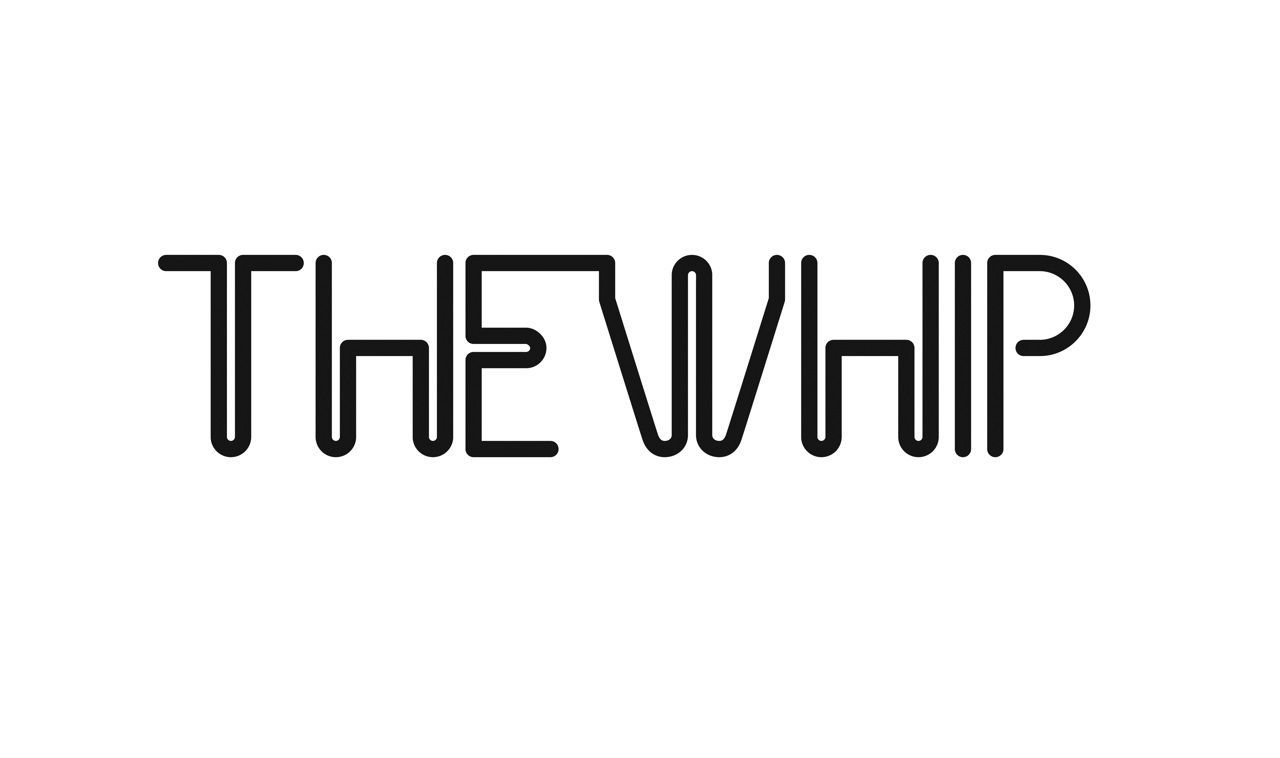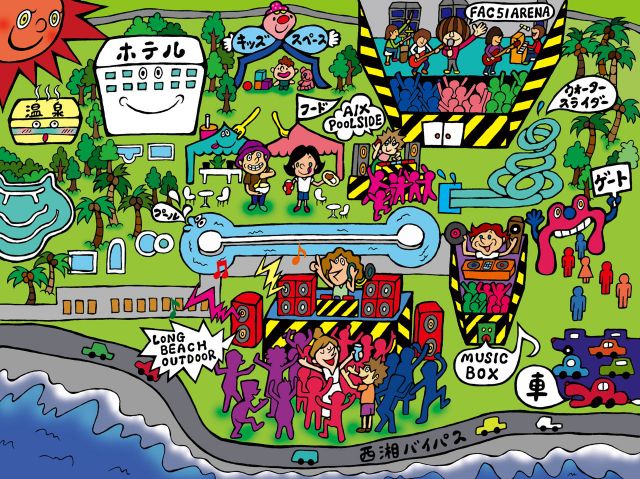2006年にナイロン・パイロンのブルースとダニーが中心となって結成した、英国マンチェスター出身の4ピース・ロック・バンド、ザ・ウィップ。
マンチェスターのクラブシーンと一度耳にしたら忘れないポップミュージックのフックを融合させる彼らの音は、ライブフロアーをダンス・フロアーへと変えてしまうほどの圧倒的な存在感でオーディエンスを沸かして来た。
2006年、”Trash”のスマッシュヒットにより ライブとクラブ両方のオーディエンスの支持を得た彼らは 英NME誌から「ダンス・ミュージック・シーンにとって、ジェームス・マーフィー以来の衝撃だ」と好評価を受け、大きな注目を集めた。2007年はフランスのデザイン集団Kitsuneのコンピレーションに”Divebomb”と前年の”Trash“が 収録され、ファッション・ピープルからも注目を集めることとなる。 Jim Abbissをプロデューサーに迎え制作されたデビューアルバム“X Marks Destination”はSouthern Fried Recordsから2008年発表された。80'sニュー・ウェイヴ・バンドからの影響を感じさせながらも、ダンス・ミュージックのグルーヴは忘れない21世紀のマンチェスター・サウンドが完成している。
バンドであるにも関わらず他のバンドのリミックスの依頼が来るのもThe Whipの特徴だ。2007年にはEditors, Hodouken, そしてThe Courteeners をリミックスしている。
We’re sitting in a cafe on the outskirts of Manchester’s Northern Quarter. The record label has suggested that it would be best to interview Bruce, Nathan and Fee from The Whip independently of each other. Why? Because so much has happened since the release of the band’s much lauded debut X Marks Destination and everyone - band included - needs to make at least some sense of it. Therapy, Bruce calls it later on.
“It’s been genuinely intense,” confesses Nathan Sudders (bass) as a parting shot at the end of our session. “But I think the story needs to be told. There’s been euphoria, massive fall outs, sleepless nights, people leaving. Times of desperation and times of elation. We’ve never had as extreme emotions as we had making this album. In the end though it’s brought us closer together and helped us produce our best music to date.”
“I’m not sure any of us could go through it again though...”
The Whip landed fully formed in 2007 - a swaggering dancefloor inspired four piece with an ear for a pop hook culled from soaking up the vibe of Manchester’s mongrel club scene. They’d all been in bands before with varying degrees of success but this was the one. Their sound was a peak time rush of euphoria crafted into songs that stayed with you way beyond ‘the moment’. They clubbed, they partied and won club and live audiences over with the help of surefire detonations such as their crossover club smash ‘Trash’ - a riot-inducing number that assured them a peak time live slot at many of the world’s most exciting clubs and venues. It was the perfect calling card for a band crafting pop out of the intangible psychic energy created by the dancefloor.
This carefully executed mayhem didn’t escape the attention of smart promoters and labels all over the world for long. Soon The Whip were signed, released and roaring round the USA moving from party to party, gig to gig leaving dancefloors and after parties in pieces. It was fun and full-on. Not for the fainthearted. There are tales.
An increasingly relentless touring schedule saw the band take Europe countless times, Japan three times, Australia - then there was the other three forays across the Atlantic...
“It was insane,” explains Bruce Carter (singer). “Texas, New Orleans, Miami, right up the East Coast through Canada and down the other side. To me the new album reflects that mayhem, how our lives were at that time. Tracks like ‘Riot’ are about us constantly finding that place to get excited. Looking for the sparkle and finding it night after night. We got pretty crazy for a while. It’s best not to keep that up for too long.”
“We had to stop,” says Fee Daniel (drums). “Stop playing live. Stop remixing records. Stop giving it out all the time. You can’t just live it all the time. You have to write and reflect on it. We thought it would be a good idea to write tunes over in Ibiza when we were over there playing. Doesn’t work like that though does it? Not when you can be raving with your mates.”
So The Whip returned to England to digest the madness and turn it into a follow-up album that would mean something to them and their experiences. They collectively loved their debut but like any band worth its salt wanted the next one to be better. Highs create lows and lows create highs. The challenge was to distil the feeling, translate it into something universal that an audience would respond to.
“If the first album is about getting the band going and getting to the place you want to be,” explains Bruce, “this one is about being at the funfair and realising it’s where you wanted to be and also not where you wanted to be all at the same time. Being in the midst of madness is costly.”
“Take ‘Keep Or Delete’ on the new album,“ continues Bruce. “On one level it’s about the disposability of popular culture now. Perhaps about putting out a record in 2011 to a culture that treats music as disposable. But it’s also how we felt about all the brilliant people we met when we were away on tour who we loved being with but always said goodbye to only hours after we met. It’s disposable but at the same time meaningful and wonderful.”
“I have met so many people since playing in the band,” adds Fee. “Musicians can get caught up hanging out with other musicians and that can cause you to lose the magic. You’ve got to get out there and meet people, go raving. I’m doing it for the good of the band really...”
Sure.
Holed up in a hellish sounding studio in London hired from producer Brendan Lynch with near legendary producer Jagz Kooner at the helm, The Whip started turning all their distilled experiences into music. Whether it was the partying, the madness, the fact that it was little bigger than a luxury sized coffin, whatever... they couldn’t get it right.
“We could only sit on the sofa in a row,” remembers both Bruce and Nathan separately. “You had to lean forward and turn to one side to speak to anyone. We became a three piece just before we went into the studio out of complicated necessity and fortunately Jagz was there to help us shape what we had become. He really pushed us into new places stripping things down and building them back up often quite brutally. Laying down the 303 over ‘Riot’, taking stuff out but always totally honest with us.”
Jagz Kooner is no stranger to diving headlong into complex sonic situations having been a founder member of acid house pioneers Sabres of Paradise with Andrew Weatherall. His work with Primal Scream, Kasabian, Oasis, Reverend & the Makers and Royal Trux gave each band some of their finest work to date. Taking the role as a fourth pair of ears he inspired a brutality in the band’s musical decisions where each member strived to be the best they could with no compromise.
“We kind of got locked in to the studio in a way that wasn’t healthy,” says Nathan looking back. “Other musicans will probably recognise this state. I remember one night Jagz had been working for 14 hours straight through on the drums without a break, food or even a drink. He just collapsed at the mixing desk. I thought we’d fucking killed him.”
With the band now gelling and genuinely replicating the energy and emotions that a life on the road had thrown at them, Wired Together finally started to take shape. Friends in both The Chemical Brothers and Primal Scream would drop by the tiny studio to see what was happening and they felt it too. The Whip were starting to build a follow-up album that took the energy of the first album but crafted it better, worked it better, and did it better. Lyrically Bruce was expressing himself with more clarity than ever before and the band’s music - though more club oriented at this point - reveals itself through more hooks and a purer energy.
“It was such a good feeling to get to that place,” says Bruce. “Sleepless nights, falling out, losing a band member, crying from the confusion of it all, it was too extreme. But we did it and I’m proud we did. The record is a testament to this.”
“We’ve been through a lot,” agrees Nathan. “But this is the record that brought us back together and captured the spirit of the band. But better than that even... We now have a record that we can take out live in the autumn ? one that we know full well is going to get people excited about The Whip all over again.”
Richard Hector-Jones


